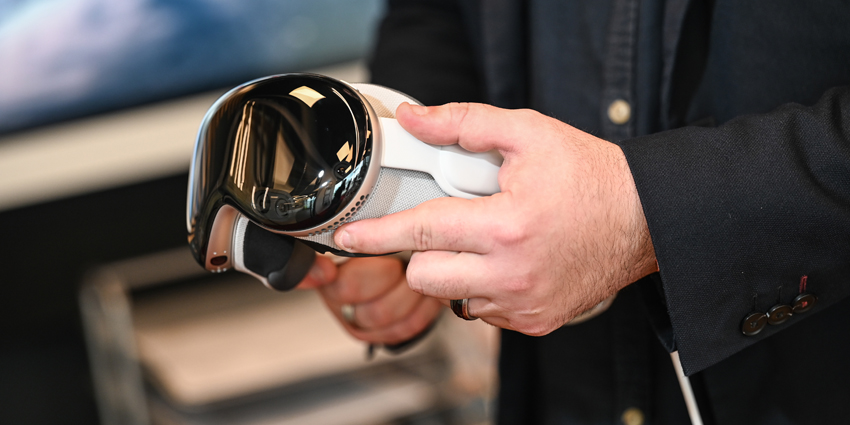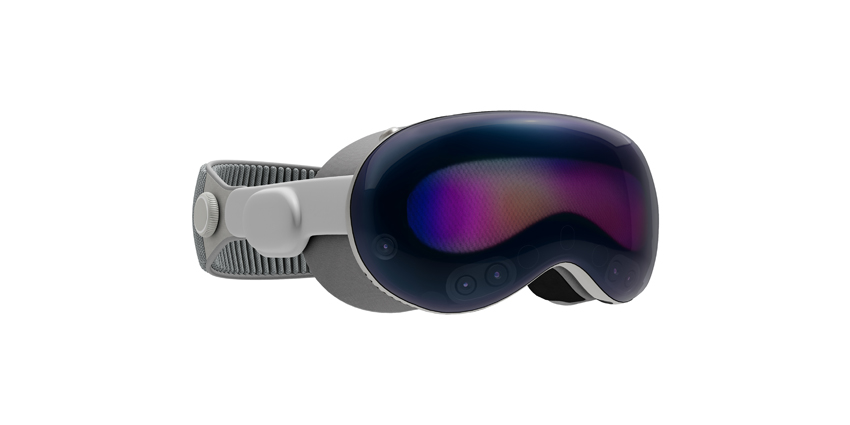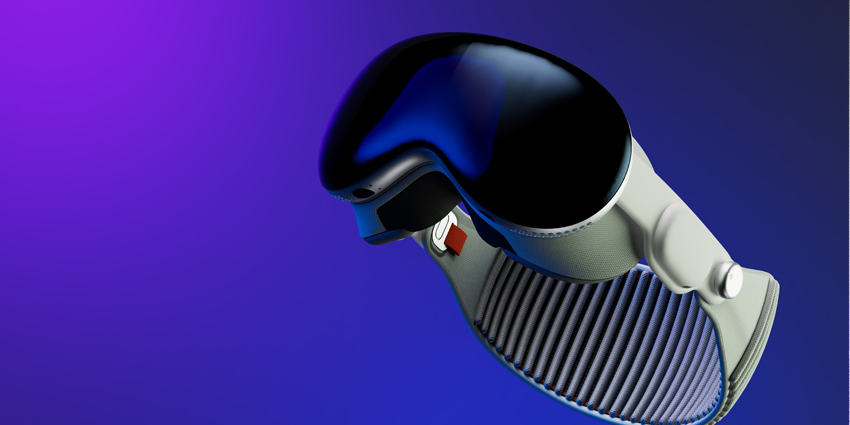After months of tinkering and testing, Project Iris, Google’s latest AR innovation, appears to be another “Google Glass Failure.” For years, Google has been toying with the idea of becoming a real competitor in the extended reality market.
But for all its innovation and resources, Google’s AR ideas never really seem to pan out. We saw this when Google first removed Google Glass, its AR headset, from the consumer market. Then again, when the company decided to officially retire Google Glass Enterprise earlier this year.
Now yet another Google AR concept is being thrown to the scrap heap: Project Iris.
So, are the Iris smart glasses just another Google Glass failure, and why is Google struggling so much in the AR market? Let’s look at the facts.
The Beginning: What Happened to Google Glass?
Google’s venture into Augmented Reality has been steeped in problems practically from day one. In 2010, the Google “X Development” initiative started looking for ways to improve life and everyday experiences for users in the digital world. Google Glass was part of this vision.
The company wanted to create a set of eyeglasses that allowed users to navigate through content with voice and motion control. It was one of the first sets of “smart glasses” to hit the market.
Unfortunately, Google’s lofty ambitions for Google Glass didn’t pan out. Many believe the main problem was the company’s desire to move too quickly. Google wanted to capitalize on the mystery and excitement around augmented reality.
They didn’t promote the product as a “prototype technology” but focused on generating as much hype as possible for a solution that, ultimately, didn’t deliver.
Google’s fast-paced strategy also pushed the company to release a product prototype to the public to collect customer feedback. Unfortunately, the result was a lot of stigma and bad publicity. Some bars and restaurants banned wearers from entry, and the term “glasshole” was even coined by unhappy fans.
Within two years, Google announced it would be ceasing its production of its consumer-grade product. But it wasn’t ready to give up altogether. The company pivoted to the business sector and launched the Google Glass Enterprise edition, designed specifically for the commercial world.
Once again, however, the Google Glass failure streak continued, with Google officially shutting down enterprise production in March 2023.
Why Was Google Glass Such a Failure?
So, why was Google Glass such a failure?
On the surface, it seems like the technology should have been a roaring success. After all, Google has all the technology and expertise it needs to create unique products. Plus, the Google Enterprise glasses were undoubtedly much more impressive than their predecessors.
However, the epic failure of the initial Google Glass launch probably didn’t make it easy for Google to compete in a market where AR technology is constantly evolving.
Initially, the first version of Google Glass was mired with issues such as:
Health and Safety Concerns
Back when Google first announced Glass, people weren’t sure how augmented reality would fit into their lives. Experts were concerned about the side effects of having information super-imposed over a person’s field of view at all times, understandably.
Plus, Google faced a barrage of queries about radiation exposure from the glasses and their overall functionality. According to some users, the glasses could rapidly overheat within just a few minutes of video recording. Not the most appealing feature for a wearable device.
Lack of Clarity
Google presented the initial Google Glass project as a futuristic, world-changing concept. However, most consumers didn’t know what problem these devices were intended to solve. We knew that Google Glass could capture pictures and search for information online.
However, even the Google team didn’t know how to position their new product. They experimented with showcasing it as a style accessory, a mini-computer, and more. Overall, the glasses seemed unable to compete with devices like smartphones that, at the time, had better cameras, battery power, and processors.
Pricing
A hefty price tag makes it difficult to sell anything that isn’t genuinely incredible. That’s likely a problem Apple is dealing with right now, hence all the issues with the upcoming Vision Pro headset. Unfortunately, Google Glass costs users around $1,500, despite its drawbacks.
Although the glasses were far from transformational, Google stuck with its hefty price tag, alienating a significant portion of its potential user base. Even the new Enterprise glasses, with their advanced functionality, were pretty pricey.
User Experience
On top of those issues, the Google Glass failure was exacerbated by poor user experience. Batteries only lasted around 3 hours on average. The devices weren’t designed to withstand constant exposure to various elements, and the UI took a while to master.
Plus, it didn’t help that most customers didn’t particularly like the design. A lot of consumers felt the glasses looked “dorky.” So that killed Google’s plans to transform the Google Glass headset into a fashion accessory, despite its attempts to collaborate with fashion brands.
Competition
Competition is always hefty in the technology market. Even when Google first announced its Google Glass headset, when the AR market was still new, there were problems. The company wasn’t “augmenting reality” as it claimed with its device, just supplementing it.
This meant they had to compete with intelligent televisions, watches, speakers, and smartphones that could accomplish much more than the headset could offer. By the time the Google Glass Enterprise model was released, offering more advanced AR experiences, new innovators had already saturated the landscape with evolving proprietary technology.
The Next Google Glass Failure: Project Iris
Despite the initial Google Glass failure, Google has continued experimenting in the AR landscape. First, there was the Google Glass Enterprise Edition. Then, in January 2022, publications reported on the development of a new Google AR headset, Project Iris.
Project Iris had the potential to chart a new course for Google’s XR team. According to early reports, the product would resemble something similar to “Ski goggles” rather than traditional glasses. It would also run on an unspecified processor for big improvements in AR.
The idea was likely to create something that would compete against the headgear emerging from the likes of Meta and Apple. Google even showcased proprietary technology at Google I/O events, like automated translation glasses with built-in navigation features.
Unfortunately, in June, reports about Google’s decision to kill the Project Iris concept entirely started emerging. So, what happened?
Why Did Project Iris Fail?
Since the information released about Project Iris has been limited, it’s difficult to know whether the headgear suffered the same problems that led to the Google Glass failure. However, according to various reports, the project faced many issues from the get-go.
Massive layoffs throughout the technology industry last year haven’t bypassed Google. The company has lost a lot of its top talent and is struggling with a dwindling budget like many brands. Even Google’s head of AR/VR, Clay Bavor, left the company a few months ago.
Kurt Akleley, an engineer attached to the Project Iris campaign, also appears to have retired. Alongside the loss of talent, there’s a good chance Google is still struggling to compete as a new entrant to the AR space. This was a problem with the initial Google Glass failure too.
While Google Glass couldn’t compete with the smartphones and similar devices available to users when it was first created, Project Iris would have had to face a lot of significant competitors.
The market for smart glasses has undoubtedly been ramping up in the last year, and significant vendors like Vuzix, RealWear, and Rokid are already leading the way.
With Apple’s Vision Pro headset somewhere on the horizon, Lenovo announcing a new set of smart glasses in production, and Meta teasing their own smart glasses project, the space is becoming crowded. This might be the reason why Google has decided to change directions.
According to the company, they’re now focusing on the “software” side of the technology required for augmented reality rather than hardware.
Is Google Officially Out of the AR Game?
So, with another Google Glass failure on the cards, is this the end of the AR dream for Google?
Not necessarily.
As mentioned above, Google plans on getting involved with software creation, which it hopes to license and sell to other AR creators. Additionally, the company does appear to be collaborating with other companies in the industry. In February, Google, Samsung, and Qualcomm announced a vague partnership on a mixed-reality platform.
Google may provide its software expertise to vendors like Samsung, who are working on their own extended reality solutions. This wouldn’t be the first time the two companies joined forces. Google worked to modify the Android platform to support the “Galaxy Fold” line from Samsung.
It may be that a future “Google Glass” experience will simply be an AR or smart glasses headset created by another manufacturer and powered by Google. Or, Google may change directions again and bring its AR project back to life.
The company certainly seems to have a continued interest in the XR space. Whether any successful wearable will ever emerge from the Google headquarters remains to be seen.







